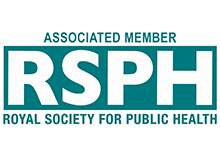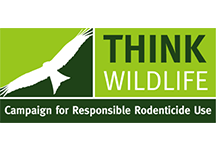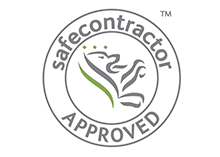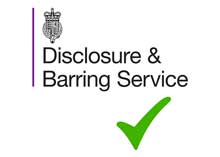Bees are fascinating and essential creatures, but having bee nests in or around your home can be both a nuisance and a safety concern and so you may need the removal of bees nest.
Whether you’re dealing with honeybees, bumblebees, or another species, understanding the proper steps to safely remove and relocate a bee nest is crucial. Let’s dive into the safe and effective methods to ensure both your safety and the bees’ wellbeing.
Have you ever wondered what the safest methods are to remove a bee nest without harming the bees or putting yourself at risk?
Removal of Bees Nest: Key takeaways
- Identifying the bee species is crucial for safe removal
- Non-lethal methods are preferable for both bee preservation and safety
- Protective clothing and equipment are essential to avoid stings
- Proper planning and timing of the removal process are key
- Professional services can provide a safe and effective solution
Assessing the Bee Nest
Before you can safely remove a bee nest, you need to thoroughly assess the situation. Understanding the specifics of your bee situation will determine how you proceed.
First, the location of the bee nest is paramount. A nest high up in a tree will necessitate different equipment and techniques compared to one inside a wall cavity. High traffic areas may require more immediate attention to avoid potential stings to your family or pets.
Next, identifying the species of bee is incredibly important. Honeybees, for instance, are usually less aggressive than wasps and require different handling. Knowing the species can help you take the right precautions and use the most appropriate methods.
The size of the nest also plays a significant role. Larger nests might indicate an established colony, making removal more complex. Smaller nests may suggest a newer, less settled colony.
The activity level of the bees can give you clues on the best time to attempt removal. Highly active bees may mean the nest is in its peak season, making removal more challenging. Observing their activity can guide your timing.
Finally, seeking expert advice from local beekeepers or pest control experts in Wales can be invaluable. They’ve likely dealt with similar situations and can offer insights specific to your area, preventing future infestations.
Understanding Bee Behavior
Comprehending bee behaviour is an essential step in the safe removal of a bee nest. Bees are generally more docile during certain times and under specific conditions, which can make your task easier.
Cool weather tends to make bees more docile. Therefore, attempting nest removal during early morning or late evening when temperatures are lower can reduce the risk of aggression.
It’s essential to note that honeybees are generally less aggressive compared to wasps. Honeybees are more focused on protecting their hive rather than attacking intruders. Understanding this can help you approach the nest with more confidence.
Bee activity typically peaks during daylight hours. By observing when bees are most active, you can plan to remove the nest when they are less likely to be agitated and defensive.
Bees also have a sophisticated way of communicating through pheromones. These pheromones can signal danger to the colony. Understanding this can help you to avoid actions that might agitate the bees and cause them to become defensive.
By observing the entry points, you can understand how the bees enter and exit their nest, which can be critical for planning the safest and most effective removal process.
Planning the Removal Process
When planning to remove a bee nest, timing and careful preparation are key factors. The process should be well-thought-out to ensure safety for both you and the bees.
Removal should preferably occur at dusk or dawn, when bees are less active and more likely to be inside the nest. This reduces the risk of agitating the colony and makes it easier to capture the majority of the bees.
Another crucial step is to have a clear exit strategy in place. If the bees become agitated and start to attack, knowing your escape route can prevent stings and other injuries.
Non-lethal methods should be prioritised, as bees play a vital role in our ecosystem. Methods such as gently smoking the nest or using a bee-friendly repellent can encourage bees to leave without killing them. Relocating the bees allows them to continue their important work in a new, more suitable location.
Proper timing reduces the risk of bee aggression. Observing the bees’ behaviour and planning your removal when they are calmest can make the process smoother.
Careful and informed planning minimises disturbances to the bees, ensuring a more peaceful removal process. This can involve everything from choosing the right time of day to consulting with a bee removal specialist for their expertise.
Gathering Necessary Tools and Equipment
Equipping yourself with the right tools and equipment is vital for a successful and safe bee nest removal. Proper gear not only ensures your safety but also facilitates a more humane and efficient process.
Protective clothing is a must. A beekeeping suit with a veil can prevent stings and allow you to work near the nest without fear of being attacked. Ensure it covers your entire body and fits snugly to avoid any gaps where bees might enter.
A smoker is an invaluable tool for calming bees. By emitting cool white smoke, you can induce a calming effect on the bees, making them less likely to sting during the removal process.
Using a bee brush can help you gently move bees away from the nest. This tool features soft bristles that won’t harm the bees while you guide them out of the way.
A bucket with a secure lid serves as a temporary container for the bees you collect. Ensure it’s ventilated and spacious enough to hold the bees comfortably until you can relocate them.
Finally, using specific tools tailored to your nest’s structure helps in effectively removing it without causing unnecessary damage or harm. This could include anything from basic hand tools to specialised beekeeping equipment.
Ensuring Safety Measures
Ensuring safety during the bee nest removal process is paramount for both you and any bystanders. Comprehensive safety measures can significantly reduce the risk of stings and other potential hazards.
Protective gear keeps you shielded from stings and allows you to focus on the task. A fully covered beekeeping suit, gloves, and a veil are essential.
Appropriate communication devices like a mobile phone or walkie-talkie can be lifesavers. They allow you to call for help if the situation escalates.
Maintaining safe distances for observers is crucial. Keep children, pets, and other bystanders well away from the nest area to prevent accidental stings and distractions during the removal.
Erecting barriers around the area can further reduce the risk of unexpected interactions. This might include temporary fencing or warning signs to keep everyone at a safe distance.
Having an emergency sting kit on hand is wise. This should include antihistamines, sting relief medication, and an epinephrine injector if anyone nearby is allergic to bee stings.
Removing the Bee Nest
Actual removal of the bee nest requires careful, deliberate actions to ensure the safety of both the bees and yourself. It’s a task that calls for precision and calmness.
Slow, deliberate movements prevent bee alarm. Rapid or sudden actions can agitate the bees, making them more likely to sting. Take your time to move methodically.
Utilising smoke calms and disperses the bees. By gently smoking the nest, you can coax the bees into a more passive state, facilitating a smoother removal process.
Gentle handling of the nest is crucial. Bees are fragile, and rough treatment can harm them. Carefully transferring the nest into a container or another secure area protects the bees and prevents unnecessary harm.
Careful placement of the bees into a container allows for their safe transport to a new location. Make sure the container is secure and ventilated to keep the bees comfortable during the move.
Complete removal of the nest prevents bees from returning. Ensuring all parts of the nest are relocated or destroyed avoids future infestations and keeps your home bee-free.
Handling the Bees with Care
Bees deserve humane treatment, and careful handling ensures their continued health and productivity. Here’s how you can manage them with respect.
Bees deserve humane and respectful treatment. Approaching the removal with this mindset helps you focus on preserving their well-being.
Ensuring minimal harm maintains bee health. Gentle handling and appropriate tools help prevent injuries and allow the bees to thrive in their new home.
The queen bee is the colony’s linchpin. Securing the queen ensures the colony’s stability and helps in successfully relocating the entire hive.
If some bees get separated during the removal, you can reunite them with their hive. This involves placing them near the new nest location where they can rejoin their colony.
Gentle transfer to a new location ensures the bees’ survival. Making sure they have a safe and suitable environment to move to is key to a successful rehoming effort.
Disposing of the Bee Nest Responsibly
Disposing of the bee nest responsibly is just as important as removing it. Ethical and environmentally friendly methods should be followed.
Disposal should follow local guidelines for safety. Check with local authorities in Wales to understand the best practices for nest disposal in your area.
Clean areas deter future nesting. Removing all traces of the nest and thoroughly cleaning the area can prevent bees from setting up a new nest in the same location.
Preserved sections of the nest can be donated to educational facilities or beekeepers for study and teaching purposes, turning your problem into a learning opportunity.
Composting biodegradable materials supports environmental sustainability. Bee nests are largely made from natural materials that can be broken down into nutrient-rich compost.
Seal disposal bags to prevent bees from returning. If you need to use disposal bags, ensure they’re well-sealed to stop any remaining bees from coming back to your home.
Preventing Future Bee Nests
To avoid dealing with another bee nest, proactive measures are essential. These steps can make your property less attractive to bees looking to establish a new home.
Regular inspections detect early nests. Periodically checking your property can help you identify and address potential nests before they become a problem.
Seal potential entry points to discourage bees from building nests. Blocking access to preferred nesting spots like wall cavities and roof eaves can be very effective.
Flower choices near your home can influence bee behaviour. Planting flowers that are less attractive to bees or placing them at a distance from your home can lessen the likelihood of nest formation near your living spaces.
Installing bee deterrents like bee repelling plants or electronic devices can help keep bees at bay. These measures can provide an additional layer of protection against new nests.
Professional consultations provide tailored advice for your specific situation. Bee experts can offer guidance on effective, long-term solutions to keep your home bee-free.
Seeking Professional Bee Nest Removal Services
Often, the safest and most effective method is to enlist professional help. Expert services provide numerous benefits that can make the entire process smoother and safer.
Professional beekeepers offer expertise in handling and removing bees safely. Their experience means they can tackle complex removals with minimal risk.
Licensed services ensure legal and effective methods are used. Professionals adhere to local regulations, ensuring the bees are dealt with appropriately.
Local professionals are familiar with the species in Wales, which can be crucial for effective removal. Their knowledge of local bee behaviour and species-specific techniques can greatly enhance the process.
Hiring experts minimises risk to you and your family. Professionals come equipped with the gear and experience to handle bees safely, reducing the chance of stings and property damage.
Many professional services include follow-up inspections to ensure the bees don’t return and that no remnants of the nest remain. This ongoing support can provide peace of mind and a bee-free home. Find more information on our Bee Control and Bee Removal Services page.
In conclusion, removing a bee nest safely from your home in Wales is a multifaceted process that requires careful assessment, understanding bee behaviour, planning the removal, gathering the right tools, ensuring safety measures, handling the bees with care, disposing of the nest responsibly, preventing future nests, and sometimes seeking professional help. Taking these steps ensures the safety of both you and the bees, contributing positively to the environment and protecting these critical pollinators.
Frequently Asked Questions
Are you allowed to remove bees nests?
Yes, you are allowed to remove bee nests from your home in Wales. However, it is important to consider the conservation of bees and their role in the ecosystem before taking any action. It is recommended to contact a professional beekeeper or pest control expert to safely relocate the bees without causing harm.
How much does it cost to remove a bee nest UK?
The cost of removing a bee nest in the UK can vary depending on the size and location of the nest, as well as the method used for removal. On average, the cost can range from £50 to £200. It is recommended to get quotes from multiple professionals to compare prices and services before making a decision.
How do I get rid of a bees nest for free?
It is not recommended to attempt to remove a bee nest for free as it can be dangerous and may harm the bees. However, you can take preventive measures to deter bees from building nests in your home by sealing entry points, using natural repellents like peppermint oil, and keeping your outdoor areas clean and free of food sources.
Can I leave a bees nest alone?
While it may be tempting to leave a bee nest alone, especially if it is not causing any immediate harm, it is important to consider the potential risks. Bees can become aggressive when their nest is disturbed, posing a threat to you and your family. It is best to seek professional advice on the safest way to remove or relocate the bee nest.








